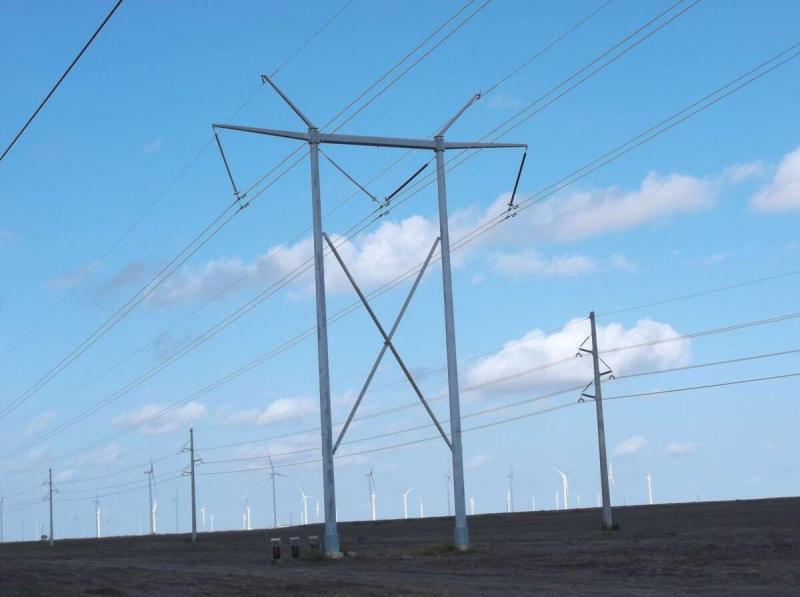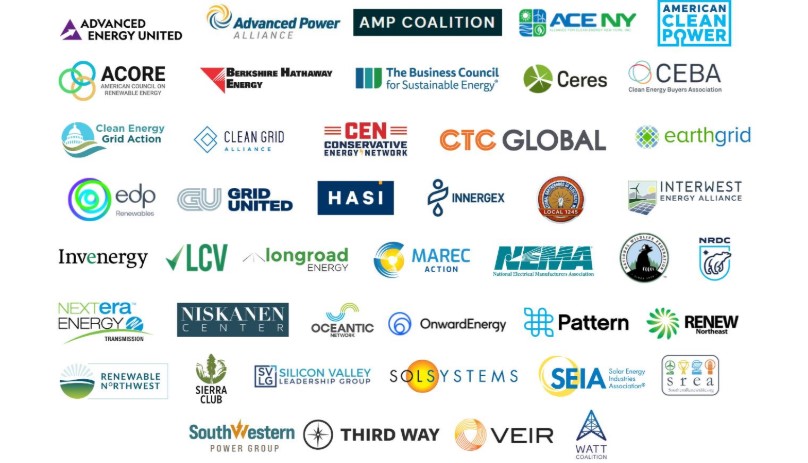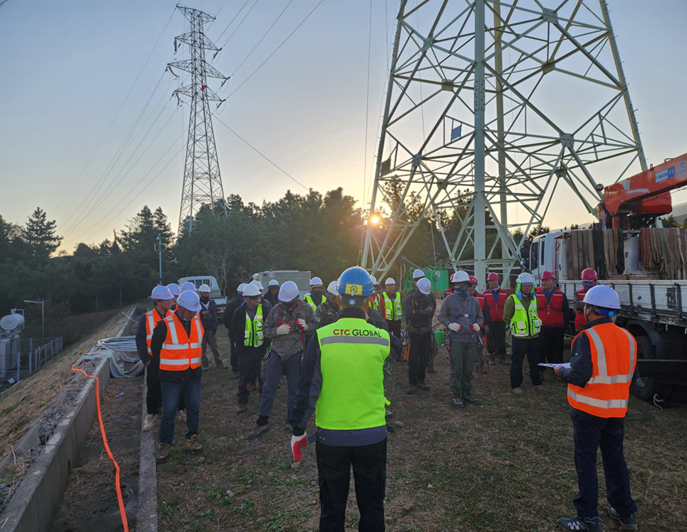Following the Western Energy Crisis of 2000 and the Major East Coast Blackout of 2003, a group of engineers in California got together to design a new type of bare overhead conductor that could carry twice the current of a conventional conductor without exhibiting excessive conductor sag. The team essentially replaced steel core strands, used to strengthen most types of overhead conductors, with a composite core made up of high-strength carbon and glass fibers.
The composite core offered a coefficient of thermal expansion nearly ten times less than steel. This allowed the ‘new’ conductor to carry very high levels of current during peak load and/or emergency conditions without sagging into underbuilt lines, trees or other structures. To date, the new conductor has been deployed to more than 430 projects in 40 countries, primarily to increase the transmission lines capacity of the existing lines.
Increasing line capacity offers several advantages. It can alleviate grid congestion allowing the grid operator to access the least expensive source of energy; it can improve grid reliability should an adjacent line fall out of service; and it can open up existing pathways to enable the distribution of renewable energy without having to build additional lines.
The downside is that this conductor type (ACCC) has been categorized as a ‘High-Temperature, Low-Sag’ HTLS conductor and engineers associate high temperature with extremely high line losses. And they are absolutely correct.
What is often overlooked, however, is the fact that this particular conductor design actually operates more efficiently than conventional or other HTLS conductors of the same diameter and weight under any load condition. The reason is quite simple. The composite core is so much lighter than its steel counterpart, that it allows the conductor to utilize 28 percent more aluminum without a weight or diameter penalty. The added aluminum content (and quality) reduces the electrical resistance of the conductor which serves to reduce line losses by 25 to 40 percent or more depending upon load level.
In North America, line losses are generally considered to be around 3 percent and the costs are simply socialized and passed through to the consumer. If you broaden the range of transmission to include subtransmission and the higher end of distribution -34.5 kV and above, the number may climb to 4 or 5 percent, but most people would still consider these to be very small numbers.
Stepping back for a moment, think about how efficiency is driving technical innovation in other industries. Boeing, for instance, developed the carbon fiber based 787 Dreamliner to reduce fuel costs, extend range, and increase airframe service life. BMW and other car companies are also using carbon fiber technology to improve performance and fuel efficiency. You may have also noticed that it’s becoming increasingly difficult to find a bicycle or a pair of skis that doesn’t utilize carbon fiber technology. Performance and efficiency go hand in hand.
Returning to the discussion of electricity, let’s consider investments made to improve the efficiency and performance of generators. Improved efficiency reduces fuel consumption, associated emissions and life cycle costs. It’s generally easy to justify a few extra up front dollars for substantial long term performance gains. Transformers and other equipment also benefited from technical advancements. Again, improved efficiency and reduced life cycle costs justified higher upfront capital costs.
On the consumer side, substantial improvements have been made to improve the efficiency of appliances. In many cases, utilities offered incentives to consumers to use more efficient refrigerators, air conditioning units and light bulbs because of the difficulties associated with building new generation and transmission. An outsider might think it’s a strange business model to pay customers to use less product, but all industries certainly have their share of issues.
In recent years, Smart Grid was envisioned. The idea here, simply stated, is to connect the ‘generation brain’ with the ‘appliance brain’ so they can work more efficiently. This might allow dishwashers, washing machines and other appliances (including electric cars), for instance, to tap the grid during off peak hours. This is all good.
But what about the wires themselves that connect everything? They essentially represent one-hundred year old technology and many of them have been in service for 50 years or more.
Getting back to the high capacity composite core conductor described above, let’s consider its efficiency aspects on a 345 kV line upgrade – as was recently completed by one of the larger utilities in the U.S . Keep in mind that improving efficiency was not a first tier goal. Increasing capacity for a growing market and ensuring reliability in a highly corrosive and weather event prone area were the primary objectives.
A line loss calculator using IEEE 738 methodology (and certain operating assumptions) estimates that the use of the composite core conductor will reduce line losses by 30 percent compared to the steel core conductor of the same diameter and weight that it replaced (Drake size). If we assume a 62 percent load factor and
a peak capacity of 3,000 amps, the reduction in line losses would equate to 300,000 MWh per year.
As a basis for comparison, let’s consider the energy savings offered by a 100 watt equivalent LED light bulb replacement. The LED reduces electrical consumption by around 80 percent compared to a standard incandescent light bulb. Translated, the use of 12.5 LED bulbs would save 1 kWh of electricity per hour. 12,500 LED bulbs would therefore save 1 MWh. If we assume a 4 hour per day I 365 day per year light bulb utilization, it would take 2,568.493 LED bulbs to save 300,000 MWh of electricity. At a cost of $20 per LED bulb, the energy savings would translate into a capital cost of $51,369,863.
The composite core conductor (3 phase, double bundled), on the other hand, would cost roughly $14,000,000 (not including hardware and installation costs). While these and other project costs would certainly add substantially to this figure, it would be safe to assume that the conductor would not have to be replaced every few years like the light bulbs. If the LEDs had to be replaced once every five years, the cost of the energy savings would climb well over $400,000,000.
From an environmental perspective, based on the average CO2 emissions from all combined sources of electricity in the state where this project was completed, either investment choice would reduce emissions by approximately 200,000 metric tons of CO2 per year. Considering that the average car in North America emits 4.75 metric tons of CO2 per year, this would be the equivalent of taking 42,000 cars off the road for every one-hundred circuit miles of 345 kV conductor upgraded or every 2.5 million lightbulbs replaced.
It appears that conductor replacement may be a significantly less expensive alternative.
Perhaps we should take a closer look at the wires themselves and consider how modern conductor technology and line loss reductions might cost-effectively help us reach a number of important environmental and policy objectives? If policy makers can find a way to incentivize the utilities that invest in these upgrades, everyone should win.
This article first appeared in Electric Energy T&D
by Dave Bryant
Director Technology at CTC Global (ACCC Conductor)






